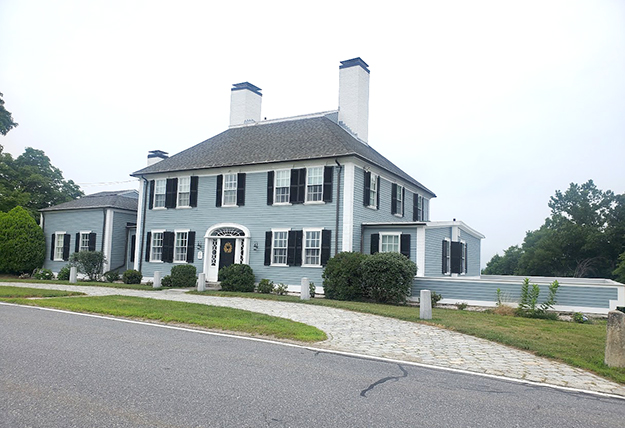
The mansion on Wilder Road
Stories and Tales of Our Town
Compiled by The Bolton Historical Society Information comes primarily from the Bolton Historical archives and Esther Whitcomb’s book “History of Bolton.” The Historical Society articles run every other week, with Roger Breeze’s older columns running alternate weeks.
Wilder’s Bolton Country Estate
It’s hard not to pause for a second on Wilder Road to admire the spectacular view of the hills and mountains of Massachusetts and New Hampshire.
It was on this road that in 1738, Josiah Richardson built a plain farmhouse with a commanding view of the valley below. The house is one of the earliest of Bolton’s many two-story, hip-roofed houses retaining its heavy Georgian proportions and steep roof slopes despite many stylistic changes over the years.
Due to its location along the Bay Path, a major east-west route from Lancaster to Boston, Josiah Richardson, and later his brother Caleb, operated it as an inn and tavern for at least 18 years before it was bought by Sampson Vryling Stodddard Wilder in 1814 at the time of his marriage to Electa Barrell of Northampton.
A real estate advertisement of 1809 showed that the farm he purchased was a true Federal-period “country seat,” with a spectacular hilltop view, cultivated gardens, two barns, a stable and coach house, and a wood- and cider house. The house was already a mansion by the standards of the day– large, “handsomely finished,” with water piped from a well to a “bathing room.” Wilder began making changes to the house that included the handsome entryway with two-third-length leaded sidelights in a pattern of diamonds and circles, and a wide elliptical fanlight with nine curved divisions.
Wilder was a European agent for some of the most influential merchants in the shipping trade and, over the course of 20 years, he crossed the ocean 16 times for business, but he began life in his new country home as a gentleman farmer raising Merino sheep. At the time, fiber from Merino sheep was highly sought after. However, the romantic notion of life as a farmer quickly dissipated, and the lure of international trade beckoned him back.

In 1817, he relocated his family to Paris where they lived for the next six years. During his stay, Wilder left the maintenance of his Bolton property under the care of his neighbor Caleb Moore. Upon his return to Bolton, Wilder brought back with him an Americanized version of his Paris life, adding hundreds of acres to the property, enlarging and refurbishing the house in the manner of a French country villa, planting formal gardens and imported fruit trees from France, including grape vines from the gardens of Versailles.
He built what was probably Bolton’s earliest icehouse, and dammed Sawmill Brook to form a large fishpond called Goose Pond. An elaborate piping system from several springs fed a hilltop reservoir that supplied water to the house and farm across the road. In about 1826, Wilder added a pair of square, one-story, hipped-roofed side wings. Each had a tall rear chimney and they connected to the main house by a short passageway. The east wing has since been demolished.
Then in 1842, unable to recover from the widespread financial crisis of 1837, the fall of the United States Bank, and some disastrous investments in the cotton trade, Wilder lost his fortune and sold the property in 1845-46.
Although all of its former outbuildings are now gone, the house has undergone major stylistic changes reducing it in size from its 19th century glory, and its property has shrunk from over 600 acres to less than five acres, the Wilder Mansion is still one of the most architecturally significant houses in Bolton.
Information for this article comes from the Bolton Historical Commission’s Survey of Historical Properties.
The Bolton Historical Society will be holding an event in partnership with the American Friends of Lafayette at the Wilder Mansion on Monday, Sept. 2 at 6:00 p.m. The AFL is commemorating the 200th anniversary of Lafayette’s Farewell tour in America.